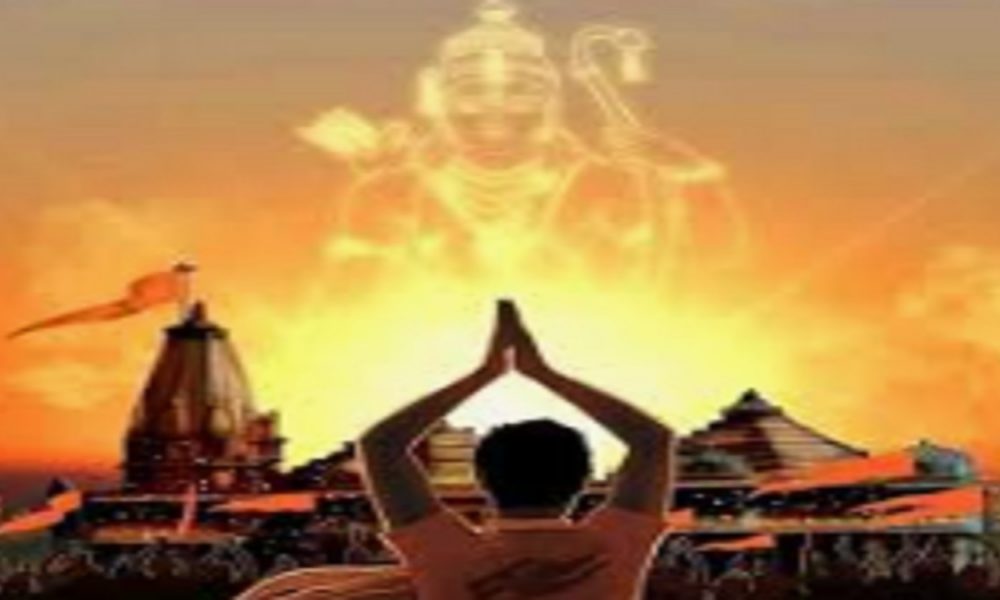
The greatest assurance for protection of Sanatana Dharma came from the Lord himself when He thundered on the battleground of Kurukshetra,
यदा यदा हि धर्मस्य ग्लानिर्भवति भारत।
अभ्युत्थानमधर्मस्य तदात्मानं सृजाम्यहम्॥४-७॥
Yada hi dharmasya glanirbhavati bharata
Abhythanamadharmasya tadatmanam srijamyaham ||4-7||
Whenever there is a decline in Dharma in the society; I incarnate from time-to-time to destroy Adharma & re-establish Dharma.
The Lord was careful with His choice of words and leaves no ambiguity when he uses the word ‘decline’ and not ‘destroyed’ or ‘eradicated’, as some neophyte Politicians today would want it to happen to Dharma. The underlying message which is often missed out is that, Dharma does or may experience decline or loss of its lustre but it can NEVER be destroyed. It would be natural to ponder as to why can Dharma not be destroyed? The rise in Adharma (that which is opposed to Dharma) happens not because of decline or decay in Dharma per se but because of decline in those practising or upholding Dharma coinciding with the increasing in those who forsake Dharma and pursue the path of Adharma.
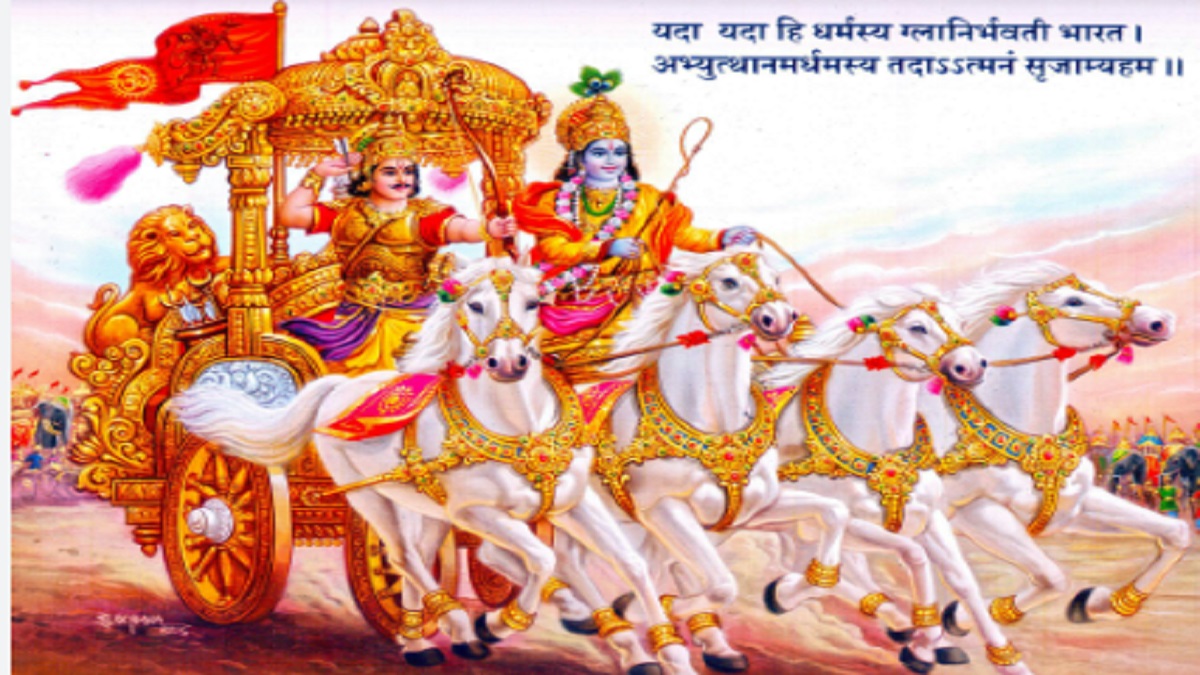
For the people of this land, attack on their Dharma (Religious beliefs & ethos) is nothing new. They have endured, tolerated, at times succumbed while most of the times sacrificed everything they had at hand to protect that which they considered as the source of their own Existence. That, which is Dharma.
Dharma is undoubtedly a very unique term, unique to this Nation and extremely subtle in its meaning too. There is no equivalent to this term in any other language or philosophy in the world & every effort to define it ends up falling short. Some refer to Dharma as Religion, some interpret it as Duty and for some it means Righteousness or Values et al. While Dharma is undoubtedly, all of this yet, it is much more than this. Dharma is best defined as the very essential nature of something without which, it ceases to exist. Heat in Fire is the best indicator to understand this subtle concept. There cannot be a Fire without heat or in other words, the very Existence of Fire is associated with its inherent Heat. Once the heat is gone, there is indeed no Fire.
If we understand this correlation it would be easier to understand what is meant by the statement, That which is the basis of Existence, is Dharma.
Sanatana, as the terms implies means Ancient, implying to Timeless-ness. So, when the term Dharma is prefixed with Sanatana it means that Dharma which is ancient and predates everything else, even time. That Dharma which existed at the beginning of Existence, is referred to as Sanatana Dharma. Surely, by now we can agree that this concept of Dharma which has been so effortlessly internalised by the inhabitants of this land, at times even without grasping the full import, is indeed very subtle & not meant for debates or arguments in public.
The Mahabharata has more than 100,000 Verses and it is considered as the longest Poem ever written till date. While narrating the Mahabharata to King Janmejaya who was the Son of one of the few survivors of the holocaust of the war, Rishi Vaishampayana – one of the direct disciples of Sri Veda Vyasa (The Author of Mahabharata) declares,
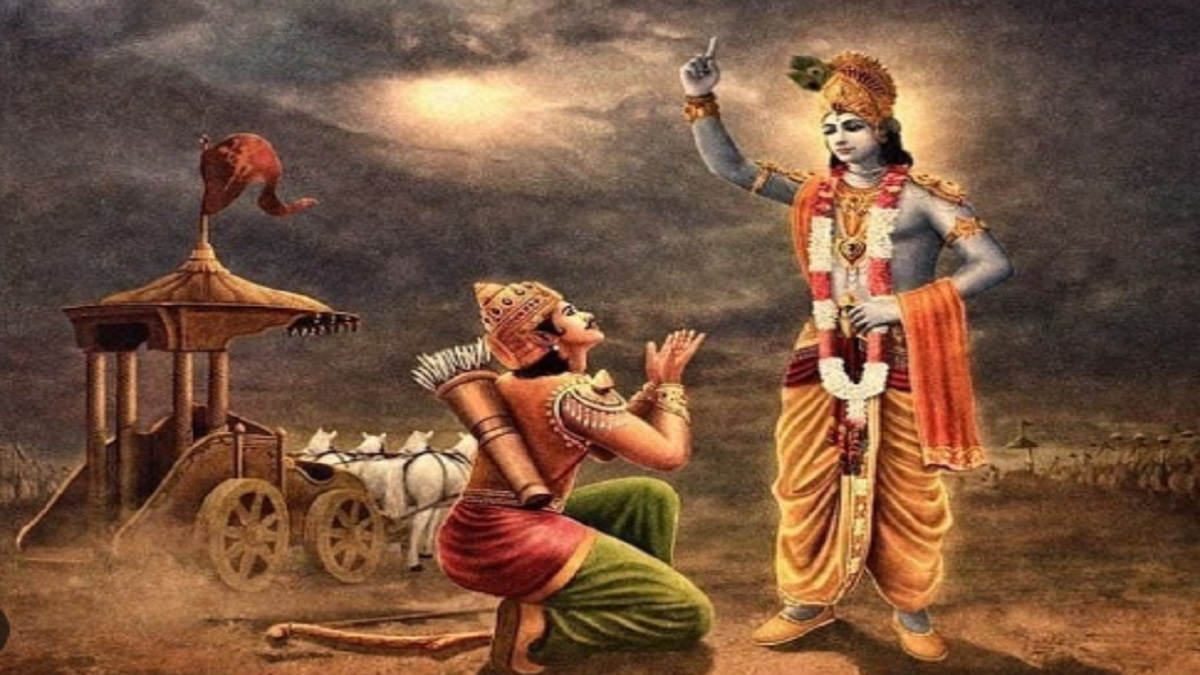
धर्मे चार्थे च कामे च मोक्षे च भरतर्षभ |
यदिहस्ति तदन्यत्र। यन्नेहस्ति न तत् क्वचित्॥ (१/६२/५३)
Dharme cha-arthe cha kame cha mokshe cha bharatarshabha |
yadihaasti tadanyatra yannehasti na tatkvachit ||
O Bull amongst the Bharatas (referring to the King as the best amongst the Bharatas)! Whatever has to be said about Dharma, Artha, Kama and Moksha has been said here (in this Mahabharata). And, whatever is not mentioned in here is not available anywhere else. (1/62/53)
In the Mahabharata, we are introduced to some great personalities like the most revered Bhishmacharya (the Great Grandsire) who was not just a greatest warrior but also one with unflinching commitment towards his Duty. We even see the finest Teacher of the times Dronacharya who not only imparts the knowledge of the art of warfare but also that about principles of morality to his esteemed students which included the likes of Dharmaraja Yudhishthira who was himself an embodiment of Dharma. Yet, when it came to the crunch moment of abiding by Dharma, each and every one of them floundered in some way or the other. That is how subtle Dharma indeed is.
In the Puranas we also come across many positive examples of those Great Men who lived by Dharma and even gave up their lives to uphold Dharma. Rishi Dadhichi was one such shining beam who gave up his life and offered his bones to the Devas to be used to make the Vajra which was required to defeat the Asuras or the demonic forces who were tormenting the innocent people.
Another famous and path-breaking definition of Dharma is given out by Maharishi Kanada considered as the Founder of the Vaisheshika Philosophy (one of the 6 prominent Schools of Philosophy of this Land) which states,
यतो अभ्युदय नि:श्रेयस सिद्धि: स धर्म:।
Yato’bhyudaya-nihshreyasa siddhih sa Dharmah.
That, which leads to the attainment of Progress (overall Development, prosperity et al) in the World; that which shows the pathway to cessation of grief and pain (to the one practising as well as to the World around him) and leads one to Bliss thereafter, is Dharma.
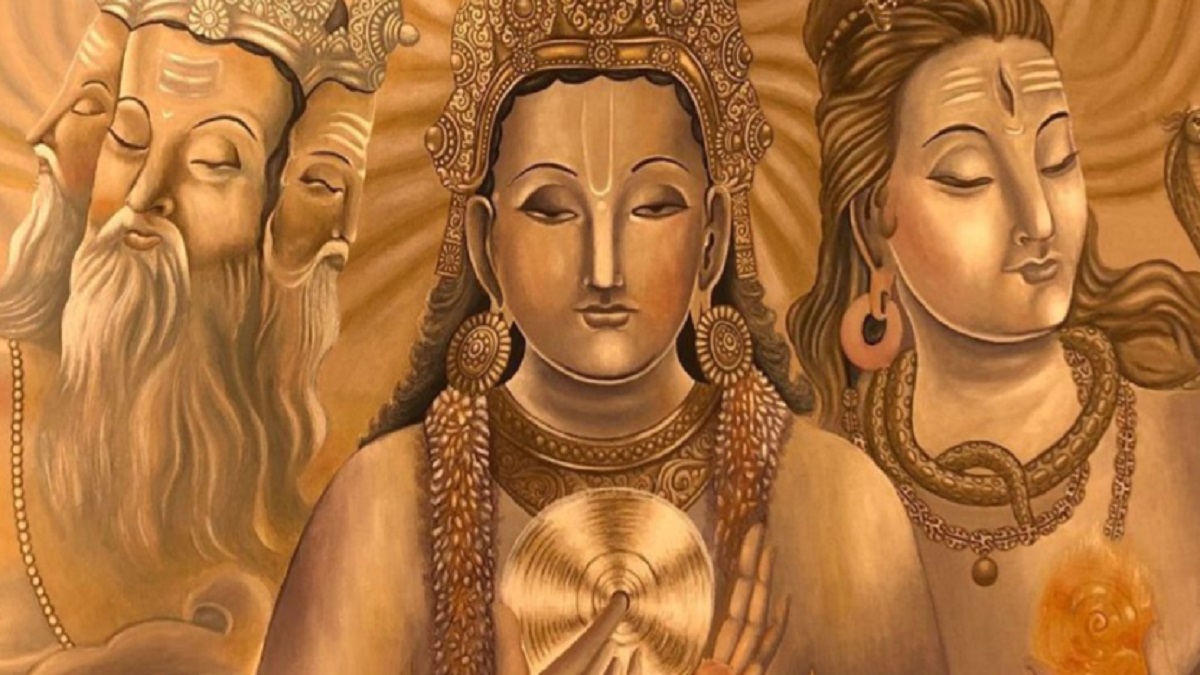
The keywords in this definition can be listed down as,
Abhyudaya = Overall Prosperity not just for the individual but an all-round comprehensive prosperity which includes material as well as spiritual prosperity.
Nihshreyasa = Contentment or Infinite Bliss.
The beauty of Sanatana Dharma as propagated from time immemorial is that, prosperity was never frowned upon and that the individual was considered to be the key to the prosperity of the society. It was also appreciated that the fate of both is inter-twined and inter-linked. Further, the unsaid underlying understanding was that, progress and prosperity must necessarily lead to Contentment as well as Inner Bliss. This thought is the foundation of the Four Purusharthas, Objectives of Human Life, as given out by the Rishis of the yore. The 4 objectives being – Dharma, Arth, Kama and Moksha which indicates that the objective or purpose of Life is to follow Dharma (the starting point) to attain Moksha (the final goal) by acquiring Arth and fulfilling Kama by adhering to the path of Dharma.
Moksha which is referred as Nirvana or Liberation or Eternal Bliss which is the Goal of every Being, whether they are aware of it or not.
Artha signifies resources or wealth or broadly speaking the means to achieve anything.
Kama refers broadly to all the Desires which includes passions, emotional fulfilment, and aesthetic accomplishment. Even desire to attain Moksha is categorised as Kama or Desire and when it becomes the sole purpose of Life it is referred to as Mumushutvam which indicates to the Burning Desire for Liberation. Ultimately, all Kama or Desire should lead one to Mumukshutvam.
Dharma refers to the Eternal Law or the Order of Life which makes everything possible. Dharma here in its gamut encompasses duties, laws, conduct, values or simply put, the Right Way of Life.
So, the prescription of Life given out by the Sanatana way of living can be summed up as, to earn wealth or garner resources righteously by following Dharma in order to fulfil all desires or to exhaust all Dharma-prescribed desires or those which have the sanction of Dharma. This implies to those Desires which are not opposed or in contradiction to Dharma. This pursuit of Artha and Kama-trupti (fulfilment of Desires) has to be subsumed within the boundaries of Dharma i.e., within the framework of Dharma for one to achieve the Final Goal of Life, Emancipation or Moksha.
For any Principle or Ideal to be considered to be Universal it needs to fulfil 2 basic criteria,
- Does it universally apply to everyone irrespective of their faith, belief, ideology, place of birth, profession, creed, nationality, varna, lineage etc.
- Is it as relevant today as much as it was in the past and will be relevant in the future too?
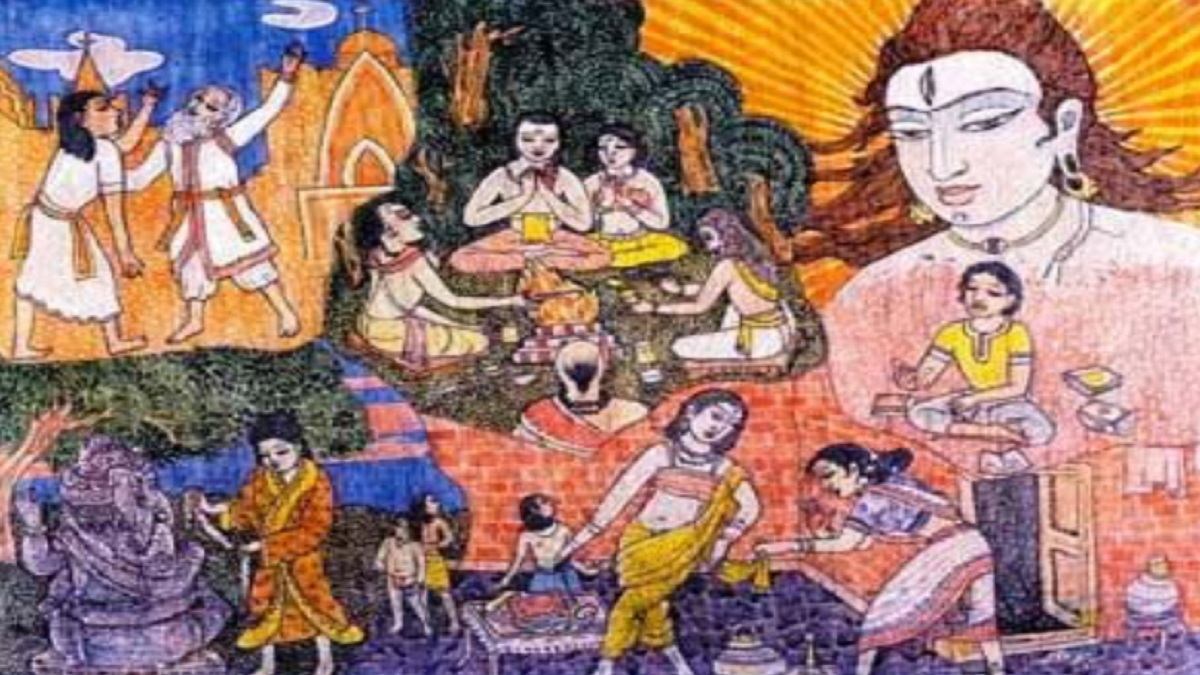
Every individual, knowingly or unknowingly, is pursuing the mantra for their life which can be summed up as, सुखः प्राप्तिः दुःख निवृत्तिः which is, to attain or strive to attain Happiness & at the same time make every possible effort to get rid of Sorrow or Pain. Is there any other driving force for any-Being, any-where in this Creation, at any-point of time? The answer has to be an emphatic, NO. Now, having agreed on this, can any Being have an absolute Right over his/her/its own Happiness? Can it be acceptable if one individual’s pursuit leads to sorrow for many? This is exactly where the concept of Dharma steps in. History is replete with instances when unbridled greed of one led to the destruction of entire society, kingdoms and even civilizations. The examples of Ravana from the Ramayana, Duryodhana from the Mahabharata or Hitler in more recent times only reiterate to this very fact. Every individual has embarked on the journey to attain Happiness and discard Sorrow and further, is engaged in obtaining the means and resources (Artha) to fulfil the Desires (Kama) which results in Happiness while reducing Sorrow. But, within the boundary of Dharma.
This is the Unique Philosophy of Dharma which is the blessing of this Land to Mankind. This Dharma is indeed Eternal since everything else may change; from the means of pursuit to the objects of pursuits but this very pursuit remains unchanged. And so does the Dharma which provides for and maintains the checks and balances while providing an opportunity to each and every one to attain Eternal Bliss, Emancipation or Moksha or Fulfilment of the Purpose of Life.
Sanatana Dharma points to that Eternal and Timeless Reality as the Goal since, it is well accepted that, while everything is subject to the realm of time, the Dharma which sustains it is indeed, Eternal.




